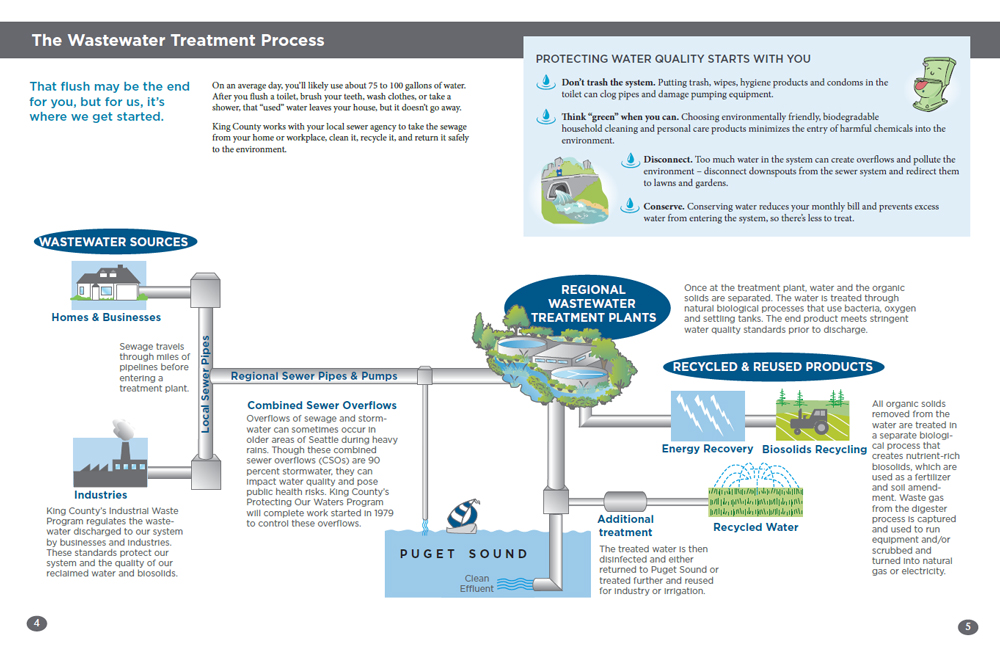How we clean wastewater
When you flush the toilet or wash your hands in the sink, the water—referred to as “wastewater”—that travels down your drain flows into a system of pipes stretching across the region. The pipes carry the wastewater to a treatment plant to get cleaned before it can be released into regional water bodies.
The process we use to clean wastewater at our 3 regional wastewater treatment plants (Brightwater, South, and West Point) and our 2 local treatment plants (Carnation and Vashon) involves these basic steps:
-
Primary treatment
Solids are separated from liquids in sedimentation tanks during this first step of the wastewater treatment process.
-
Secondary or biological treatment
Next, oxygen is added to activate the living microorganisms (such as bacteria) that eat the dissolved organic material still in the wastewater. We use what’s called an “activated sludge” treatment process, where the organisms are maintained at a very high level to accelerate the consumption process.
-
Disinfection
The treated wastewater is then disinfected using either hypochlorite bleach or ultraviolet light to remove pathogenic microorganisms before being returned to the environment.
-
Advanced treatment
Some of the wastewater treated at our regional treatment plants is reclaimed water, which must undergo an additional level of filtration and disinfection to meet state environmental and health Class A standards.
Get involved in clean water
Visit our education site to access special program resources and upcoming events, sign up for a plant tour, and learn how you can help protect our water.

 Translate
Translate
